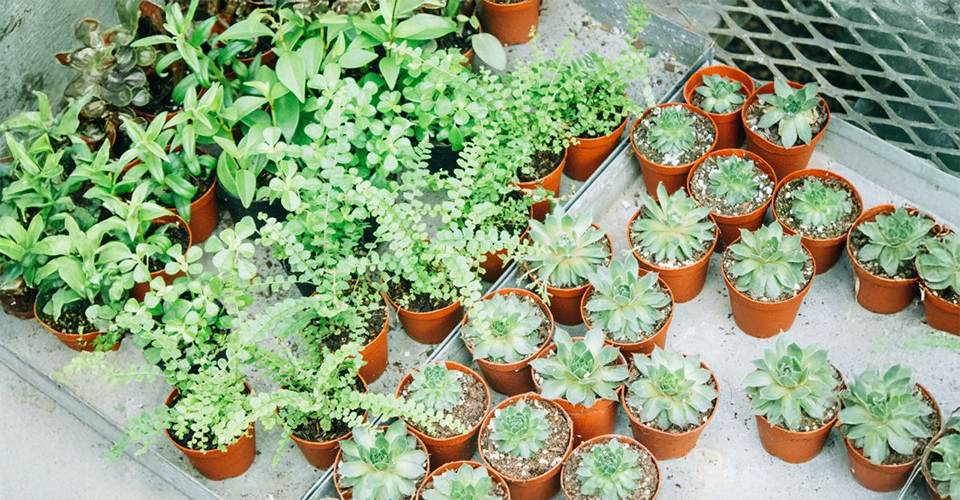If you spend a lot of time caring for the plants in your home, or if you have particularly expensive plants, you probably won't want to throw them away when you move into a new home. Thankfully, there are movers who specialize in moving plants. They will ensure that your plants make it safely to your new home.
There are a few key tips to keep in mind when you are transporting plants locally or long distance.
Check state regulations before moving
Plants seem harmless, but some states have regulations regarding certain plants crossing state lines. For example, Arizona won't allow a variety of nursery stock across state lines to avoid introducing harmful pests or diseases. So before making any serious plans to move your plants make sure to check with your state's Department of Agriculture for regulations.
Keep the season in mind when planning the move
Generally, cool weather is the best for moving plants, so you may want to plan your move for the early spring or late fall. The temperature needs to stay consistent in the vehicle that is transporting the plants. Plants cannot get too hot or too cold.
Find a plant mover
Finding a plant mover should be like finding any other kind of mover. You should make sure they are a legitimate moving company by verifying their licenses. There are an abundance of movers to choose from, so don't settle for one that does not meet your specific needs.
Access the quality of the plant moving company
If possible, visit their warehouse to see if they have the necessary equipment for relocating your plants. Their trucks should be properly equipped, meaning weather-proofed with adequate ventilation.
Water your plants right before moving them
Plants should be properly watered and fed before the move. They need to be hydrated, pruned and free of pests. Getting them into prime condition before the move will help them be strong enough to handle relocation. If they need specific care during the move, give the plant movers detailed instructions for each plant.
Transfer plants into moving appropriate containers
You'll want to research the best methods of transplanting in-ground plants. Ceramic pots could easily be broken during the move, so you should move your plants into plastic pots. You should do this well before your move, because plants are sensitive and need time to adjust to their new pot.
Plants should be ready for pick-up on moving day
There are a couple ways to make sure that when moving day arrives your plants are ready for pick-up:
-
Drain away excess water
-
Pack plants securely into boxes
-
Use packing material to make sure the plants won't shift in their boxes during the move
-
Pack each plant according to its individual needs
-
No plants should be suffocated by plastic
Prioritize unpacking your plants after moving
After arriving to your new home, carefully unpack your plants before anything else, because they are sensitive. The sooner they are taken out of their unsustainable moving conditions, the better. Unlike most of your other belongings, plants require controlled environments, so getting them into your new home as soon as possible is essential.
Properly repot or replant your plants after moving
For houseplants:
-
Carefully remove the plants from their boxes
-
Check the plants for any damages that may have occurred during the move
-
If a branch or leaf happened to snap off or wither, remove it
-
Give plants time to adjust before transferring them back to their original decorative pots
TIP: Your new home most likely has different levels of sun, humidity, and air quality, so the plants need to adjust to this. Trying to replant them into different pots can cause a lot of stress as they get adjusted to their new surroundings.
For outdoor plants:
It is possible that your new home will have a different soil composition than your old home. The plants may not survive if the difference is too extreme.
Things to take into consideration:
-
The amount of rainfall in a particular area can negatively affect a plant, depending on your old home
-
Varying levels of sunlight and different temperatures can hurt your plant
-
Compare and research your future climate to ensure that your plants will survive in their new environment
TIP: Different plants have different needs, so make sure to research the individual needs of your various plants.
Make sure the lighting is right
If your plants appear to be adjusting poorly in their new environment, it may be the lighting.
Signs of inadequate lighting:
-
Wilting
-
Brittle leaves
-
Brown spots
-
Dryness
Different plants have different lighting needs, so some may need a lot of light while others will suffer from too much.
Moving plants is a task that takes some preparation, but it is not impossible. Preparation is required for transporting plants, but it is definitely worth having your favorite plants light up your new home.
